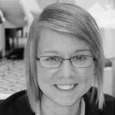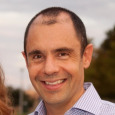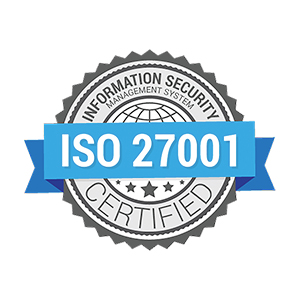Taazaa helps organizations stay relevant in the face of relentless technological change. You may ask, why relevance matters? 52% of Fortune 500 companies in the Year 2000 no longer exist. How do we do it? We recommend solutions; we design for relevance, and we leverage digital transformation for you to stay relevant.
Taazaa is a leading custom software development company in the US region. We have been in business for 13+ years and have helped 100s of businesses innovate and grow with software products that are scalable, secure, and provide an unmatched user experience. We love breaking complexities into visual mock-ups and workflows. We strongly believe that software development service providers should look beyond technologies and deliver innovative and progressive solutions.
Our top-tier talent pool of designers, developers, and QAs brings ideas to life, from planning to implementation. Let us help solve your business challenge through software development.
Focus Areas
Service Focus
- Software Development
- Mobile App Development
- Web Development
Client Focus
- Small Business
- Large Business
- Medium Business
Industry Focus
- Healthcare & Medical
- Education
- Real Estate
Taazaa Inc Executive Interview

As founder and chief executive officer, I provide the strategic vision to the company and help execute strategies to realize that vision. I love technology, so I am actively involved with our clients and their technology and make sure I get my hour of code to understand technology trends.
• Languages - C#, JavaScript, Python, Swift, PHP, HTML/CSS3
• Dev Frameworks - .NET Core, MEAN
• Front-end frameworks - Angular, React and Vue
• Mobile development - IOS, Android, Flutter, React Native, and Xamirin.
• Cloud - Public (AWS, Azure, GCP), Private (VMWare, OpenStack), Hybrid
Taazaa Inc Reviews
- All Services
- Software Development
- Mobile App Development
- Web Development
- Relevance
- Most Recent
- Rating: high to low
- Rating: low to high

Outstanding Web Development Company
Review Summary
What was the project name that you have worked with Taazaa Inc?
Website Launch
What service was provided as part of the project?
Web Development
Describe your project in brief
Improve and Launch Website
What is it about the company that you appreciate the most?
Very knowledgable. Tazaaa did a detailed assessment of website issues and implemented solutions very quickly.
What was it about the company that you didn't like which they should do better?
There were no dislikes.

Custom Clinical Support Solution Development
Review Summary
They took the time to understand my business needs and delivered a solution that exceeded my expectations. The quality of their work was top-notch, and their attention to detail was exceptional.
I highly recommend Taazaa to anyone looking for custom software development in healthcare.
What was the project name that you have worked with Taazaa Inc?
Clinical Support Solution Development
What service was provided as part of the project?
Mobile App Development, Software Development
Describe your project in brief
We were developing a custom clinical support solution that had complex modules like patient data management, clinical decision support, electronic prescribing, workflow management, and telehealth capabilities.
What is it about the company that you appreciate the most?
I think, the engineering capabilities of Taazaa are very strong. This was a complex solution, the architecture had to be created right, because the solution is supposed to be used 1000s of user at the same time. Taazaa did rigorous load testing, in a way that we were satisfied with the applications load bearing capicity.
What was it about the company that you didn't like which they should do better?
I would have loved to see the entire team participating in our sprint meetings.

Taazaa went about and beyond our expectations for our transportation software.
Review Summary
What service was provided as part of the project?
Software Development
What is it about the company that you appreciate the most?
The Taazaa team communicated effectively and included us in any updates.
The Taazaa team used the latest and greatest tools and technologies to deliver an excellent custom software for our business needs.
What was it about the company that you didn't like which they should do better?
Nothing, they treated us well and delivered on time. I recommend them to anyone.

The company took on a large task, and with outside the box thinking delivered!
Review Summary
What was the project name that you have worked with Taazaa Inc?
CookinGenie website and mobile app development
What service was provided as part of the project?
Mobile App Development, Web Development
Describe your project in brief
We are a market place for chefs and customers to connect. Our site host the profiles, menus, pricing, and scheduling for personal chefs to get booked to the customers. We also process the payments and build profiles of the customers as well for repeat business.
What is it about the company that you appreciate the most?
The creative way they tackled the enormous task that was in front of them.
What was it about the company that you didn't like which they should do better?
I mean if they could do it for free...but that's not going to happen.

Highly Recommend!
Review Summary
What service was provided as part of the project?
Software Development

Skillful developers, great leadership
Review Summary
What service was provided as part of the project?
Software Development
What is it about the company that you appreciate the most?
Skillful developers. Great Leadership team that are available for the onshore clients.

Very responsive and reliable
Review Summary
What service was provided as part of the project?
Software Development
What is it about the company that you appreciate the most?
Speed and reliability

Great Dev Partner
Review Summary
What service was provided as part of the project?
Software Development

Honest, reliable, and efficient.
Review Summary
What service was provided as part of the project?
Web Development, Software Development
What is it about the company that you appreciate the most?
The flexibility to quickly add staff and specialized knowledge. The in-house expertise and processes they have developed by working on so many different types of projects.
What was it about the company that you didn't like which they should do better?
Cannot think of anything

Skilled, diligent, dedicated team!
Review Summary
What service was provided as part of the project?
Mobile App Development, Software Development

Great company, very dedicated knowledgeable team of software developers.
Review Summary
What service was provided as part of the project?
Software Development

Can't say enough good things about the Taazaa experience
Review Summary
What service was provided as part of the project?
Software Development, App Designing (UI/UX)

A company filled with great people!
Review Summary
What service was provided as part of the project?
Mobile App Development, Digital Marketing, Engineering Services
What is it about the company that you appreciate the most?
Hard working, considerate, passionate, and versatile.
What was it about the company that you didn't like which they should do better?
There are a lot of great team members and each comes with their own approach. A more consistent approach to process is always useful.

Dedicated and hardworking team
Review Summary
What service was provided as part of the project?
Mobile App Development, Digital Marketing
What is it about the company that you appreciate the most?
Taazaa worked tirelessly with our team until the product was just as we had envisioned it.

They are best in delivering quality results
Review Summary
What service was provided as part of the project?
Mobile App Development

